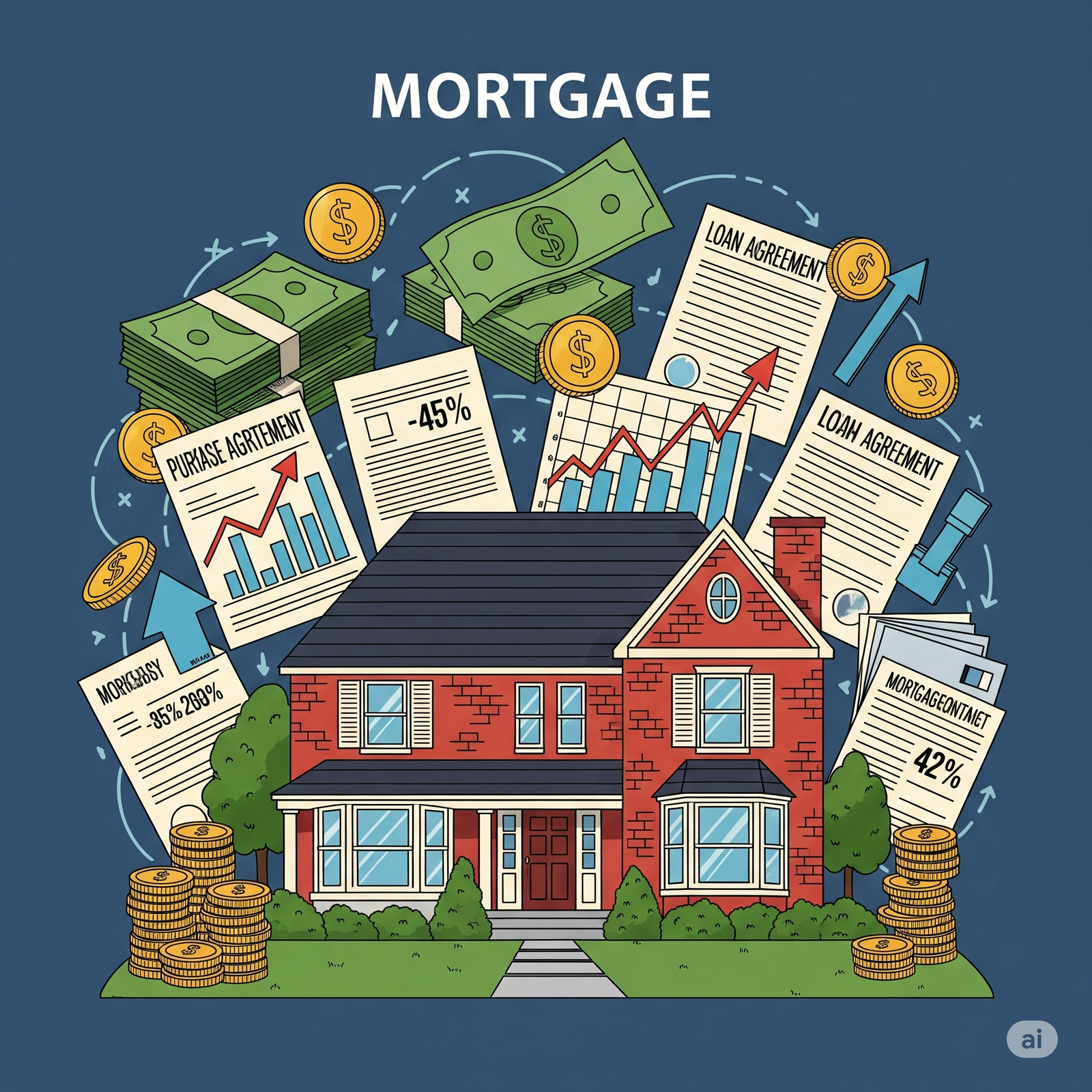Understanding Your Mortgage
A mortgage is one of the most significant financial commitments many people make in their lifetime. It is a loan specifically designed for purchasing a home, where the property itself serves as collateral. Understanding how mortgages work is essential to making informed decisions about buying a home and managing your long-term finances.
This Mortgage Calculator helps you estimate your monthly payments based on the loan amount, interest rate, loan term, and down payment. By adjusting these inputs, you can explore how different scenarios affect your affordability and financial planning.
Mortgage payments typically include principal and interest, but they may also include taxes, insurance, and sometimes private mortgage insurance (PMI). The principal is the amount you borrowed, while the interest is the cost of borrowing that money. Over time, as you make payments, the loan balance decreases, and the portion of your payment going toward interest also reduces.
The interest rate is a crucial factor in determining your monthly payment. Even a small change in the rate can significantly impact how much you pay each month and the total interest over the life of the loan. Understanding these components is the first step toward smart homeownership.

Types of Mortgages
There are several types of mortgages available, each with its own characteristics:
- Fixed-Rate Mortgage: The interest rate remains the same throughout the life of the loan, providing predictable monthly payments. This stability is often preferred by homeowners who plan to stay in their homes for a long time and want to avoid fluctuations in payments.
- Adjustable-Rate Mortgage (ARM): The interest rate is fixed for an initial period (e.g., 5 or 7 years) and then adjusts periodically based on a market index. ARMs can offer lower initial interest rates, making them attractive for those who expect to sell or refinance before the rate adjusts. However, they carry the risk of higher payments if interest rates rise.
- FHA Loans: Insured by the Federal Housing Administration, FHA loans are designed to help low-to-moderate-income borrowers, especially first-time homebuyers. They often feature lower down payment requirements and more lenient credit score criteria.
- VA Loans: Backed by the U.S. Department of Veterans Affairs, VA loans are available to eligible service members, veterans, and surviving spouses. These loans often require no down payment and do not require private mortgage insurance (PMI), making them a highly attractive option for military families.
- USDA Loans: Offered by the U.S. Department of Agriculture, these loans are designed for low-income individuals in eligible rural areas. They also often feature no down payment and competitive interest rates, promoting rural development.
Factors Affecting Your Mortgage Payment
Beyond the principal loan amount and interest rate, several other factors contribute to your total monthly mortgage payment:
- Property Taxes: These are taxes assessed by local government authorities based on the value of your property. They are typically collected by your mortgage lender and held in an escrow account, then paid out when due.
- Homeowner's Insurance: This insurance protects your home and belongings against damage from perils like fire, theft, and natural disasters. Lenders require it to protect their investment in your property.
- Private Mortgage Insurance (PMI): If your down payment is less than 20% of the home's purchase price, lenders typically require PMI. This protects the lender in case you default on your loan. PMI can often be canceled once you reach a certain amount of equity in your home.
- Homeowners Association (HOA) Fees: If you live in a planned community, condominium, or townhouse, you may be required to pay monthly or annual HOA fees. These fees cover the maintenance and improvement of common areas and shared amenities.
Refinancing Your Mortgage
Refinancing involves replacing your existing mortgage with a new one. People often refinance to:
- Lower their interest rate: If market rates have dropped, refinancing can reduce your monthly payments and the total interest paid over the life of the loan.
- Change loan terms: You might want to switch from an ARM to a fixed-rate mortgage for stability, or change your loan term (e.g., from 30 years to 15 years to pay off faster).
- Cash-out refinance: This allows you to borrow more than you owe on your current mortgage and receive the difference in cash, often used for home improvements, debt consolidation, or other large expenses.
While refinancing can offer significant benefits, it also involves closing costs and fees, so it's essential to calculate whether the savings outweigh these upfront expenses.